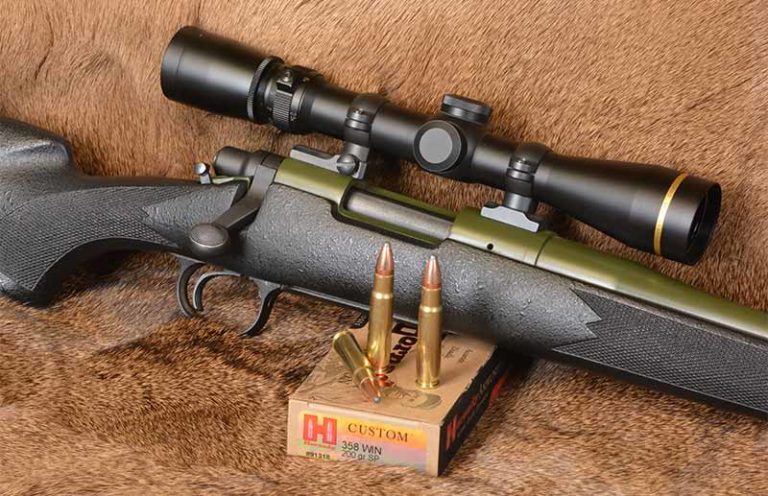
A look at the enduring legacy of the Remington Model 700, the world's most popular bolt-action sporting rifle.
“How ya gonna keep ’em down on the farm after they've seen Paree’?”
This popular song is illustrative of the huge demographic changes resulting from World War I. So many of our doughboys were ripped from rural Americana and dumped into “the rest of the world” that something had to happen.
The concept spilled over into hunting rifles as well. Those guys fought and won a war with bolt-action rifles. How would they be content with anything less for hunting?
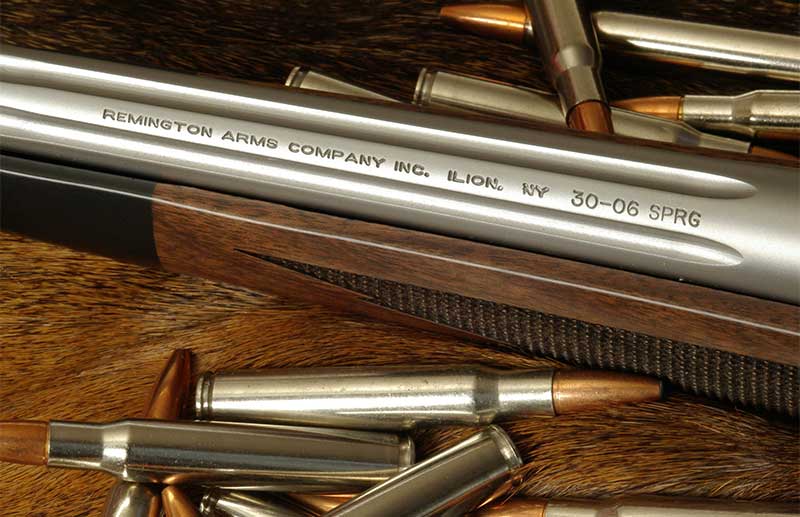
Remington answered with its Model 30 rifle, introduced in 1921. Using leftover Enfield parts and chambered in .30-06, it was a sporting version of the rifle soldiers carried in war. In 1926, the Model 30 Express replaced it. It was a lighter rifle that cocked on opening and was offered in many variations and in a multitude of cartridges. It showed American hunters the future of sporting rifles.
World War II killed off this rifle, as it did so many great firearms. Following that war, Remington introduced the Model 721 bolt-action rifle in 1948. It was a gun meant for the times. Using different manufacturing techniques and the engineering genius of Mike Walker, who was an avid benchrest shooter, the rifle was inexpensive and outstandingly functional. By using a cylinder-type action, manufacturing costs were reduced and accuracy improved. The 721 and the later short-action 722 rifles were just what the returning GIs needed: affordable performance.
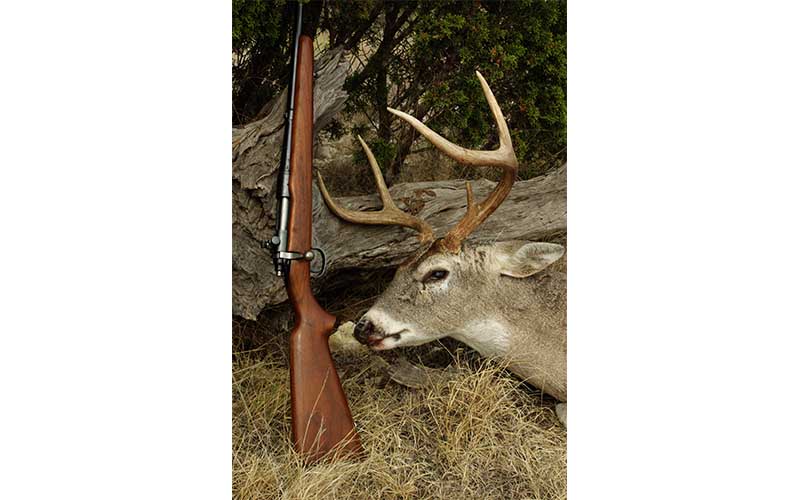
The only flaw, if it might be called that, was the guns were rather plain. As the country prospered in the post-war boom, shooters’ tastes evolved, and they began looking for form as well as function. Remington was losing market share to the prettier Winchester Model 70. In 1962, Remington addressed that problem with the introduction of the Model 700 rifle, along with a hot new cartridge, the 7mm Remington Magnum. The duo helped launch the magnum mania that followed.
Lucky Sevens
The 700 retained the basic design of the 721, but with improvements and in a slicker, better-looking package. As they say, the rest is history. With more than 5 million sold, the Remington Model 700 rifle is arguably the best-selling, bolt-action sporting rifle in history. The models and variations that followed in the next 58 years are mind boggling, but they all have a common theme: the Model 700 action.
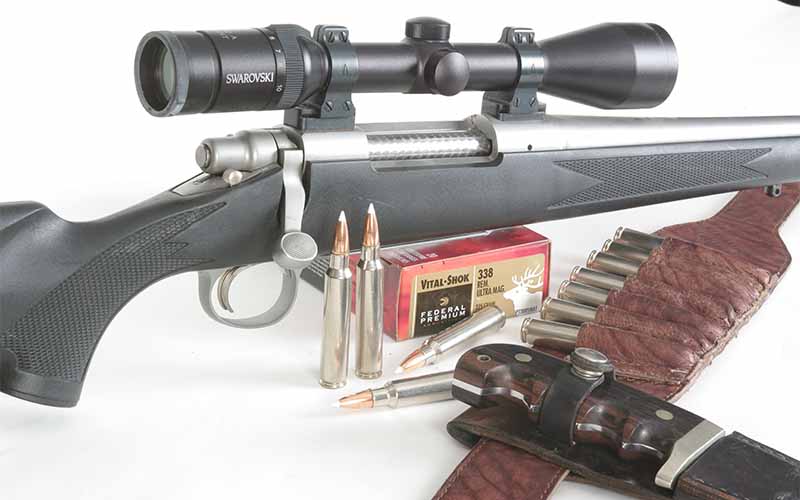
When it comes to rifles, everything is round. The cartridge is round, the bullets are round, the barrels are round, the bore is round, the bolts are round—and so it stands to reason that the action should be round. If we’re able to keep all these round things to a common center, accuracy is ensured. That, in a nutshell, is the success of the Remington 700 action. Because it’s round, it’s also less expensive to manufacture with far less machining needed than with other action designs. It’s much easier to hold precision, which is one key factor in the Model 700’s legendary accuracy.
The Model 700 comes in two lengths, short and long. One or the other will fit any cartridge from .17 Fireball through .375 RUM. The Model 700 bolt maintains the two-forward-lugs lockup style popularized with the Mauser action. This is a very strong action and, again, it’s easier to maintain accuracy. Two lugs are easier to machine precisely than three, six or nine. One component of accuracy is that all lugs support the bolt equally. The more lugs there are, the harder it is to achieve this goal.

The 700 bolt has a recessed bolt face that fits into another recess in the barrel and, when you add the action, this creates the legendary “three rings of steel” surrounding the cartridge. This is considered to be much safer in the event of a cartridge failure, as it helps isolate the gasses and particles from the shooter. There is some merit to the theory that this recessed bolt face helps keep the cartridge aligned in the chamber to enhance accuracy. Again, the more centered everything is, the better the accuracy. The recessed bolt supports the rear of the cartridge and helps keep it centered with the bore.
The Model 700 has a very fast lock time, which is the time from when the trigger releases until the firing pin strikes the primer. The theory is that the faster this happens, the less chance of the gun moving and having a negative effect on accuracy. While this does not mechanically improve accuracy, in the real world it makes it easier for the shooter to access the inherent accuracy in the rifle.
The Model 700 uses a separate recoil lug, which fits like a washer between the barrel and the receiver. Again, this keeps costs down as it’s much less expensive to make than to machine the recoil lug integral to the action, as seen with some other rifle designs.
The Push Feed Facts
There are two complaints we often hear from rifle nerds about the Remington Model 700. First is that it’s a push-feed rifle. That means that once the cartridge is free from the magazine it’s not mechanically supported as it’s pushed by the bolt for the short remaining distance into the chamber. In contrast, a controlled-round-feed (CRF) rifle captures the cartridge behind the extractor as it exits the magazine and holds it against the bolt face while it is fed into the chamber.
One downside of using a CRF rifle is that most cannot be fed single cartridges. If the rifle is dry and things are happening fast, the option of tossing a cartridge into the loading port and slamming the bolt shut is comforting. Most push-feed designs allow this while most CRF rifles do not.
The other side of the argument is that the push-feed design seems to be a bit more accurate. The tension of the extractor on the cartridge in a controlled-round feed can influence the cartridge position in the chamber in a negative way. Most precision rifles are push-feed design because, when accuracy is measured in tenths of an inch, the push-feed seems to have the advantage.

The other common complaint about the Remington Model 700 design is the extractor. Every armchair expert out there will tell you “It’s no damn good!” The dangerous-game hunting guys and the tactical guys all claim it’s a huge problem that will get you killed in the “real” world.
I’ll be honest: It’s a fragile-looking little thing that looks like it should be a problem. But it’s not. I should note that this extractor style has been used by Remington going back to at least 1948 with the 721 and 722 model rifles. There are almost 7 million rifles out there with the “horrible” extractors, and yet there are virtually no reports of them failing during a critical time and getting somebody killed.
I’ve been a fan of Remington rifles all my life. I bought the first one, a Model 788, in 1968. Over the years, I have had a lot of Model 700 rifles and its relatives that use the same extractor system, such as the Model 788, Model Seven, Model 721 and Model 722, pass through my gun vault. I’ve used a few hundred different rifles with the Remington-style extractor, in a lot of cartridges and in a lot of places—and I have never had an extractor problem.
If we followed up on most of the reports of extractor failures, we likely would find that an overpressure handload was stuck in the chamber and somebody beat the hell out of the bolt to remove it. The truth is, I did that myself, back before I knew better, and still never had an extractor fail. I have seen the bolt handle break off when a guy was beating on it with a chunk of firewood to extract a stuck handload, but the extractor held.
I’m sure the extractors wear out like any other piece of machinery and that they break now and then, but I just can’t find any evidence that the Remington extractor is a true problem.

However, if you’re concerned, it’s easy enough to have a gunsmith replace the Remington extractor with a Sako or M-16-style extractor. This is a common “upgrade” to the Model 700 rifle. I’ve installed both style extractors on custom rifles I’ve built, and I’ve left the original factory extractor in other custom rifles I’ve built. The number of problems with any of the extractors so far is zero. A couple of the rifles have been used for long-range target shooting and for a lot of ammo testing for magazine articles, so the round count is getting seriously high.
Considering A Custom
Speaking of custom rifles, the Model 700 action is a long-time favorite of custom-gun builders, both professional and hobbyists. It’s one of the few production rifle actions available on the current market as the action only. It also has a huge number of aftermarket parts and accessories available. When it comes to building bolt-action rifles, nothing matches the Model 700 in terms of the gadgets and goodies made to fit. It’s the “kit” rifle of bolt actions.
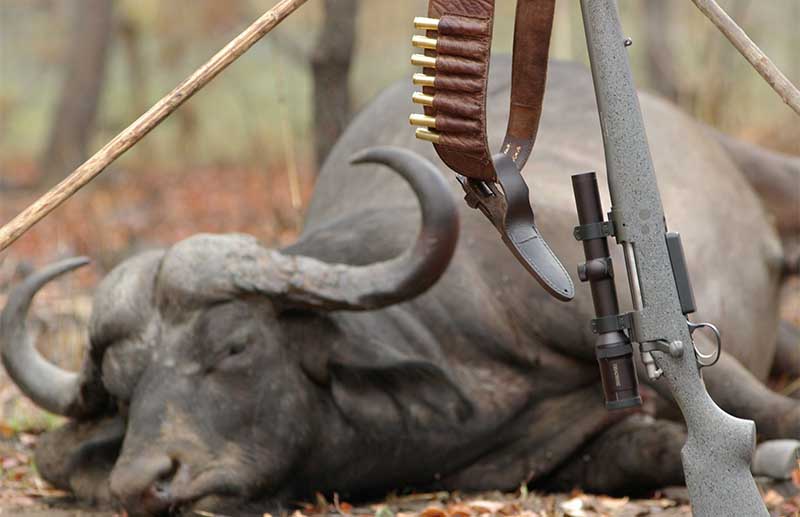
The Remington 700 is extremely easy for hobby and professional gunsmiths to work with, and it can produce outstanding results. Before I had a lathe, I customized several rifles using only hand tools. I would lap bolt lugs for even contact, true the bolt face and then fit a short-chambered barrel. A short-chambered barrel comes with 90 percent of the work done. The threads are cut and the chamber is left .010-inch short so that once it’s on the action you can finish cutting the chamber to the correct headspace. This provides a viable option for a hobby gunsmith with only hand tools. By cutting the last of the chamber by hand, you can make the perfect minimum spec chamber.
How well does that work? I have a .308 Winchester I built that way that will shoot 0.5 MOA all day long. This is a great way to get started building your own rifles without spending your kid’s college fund on expensive power tools.

The boom in custom rifles has inspired an entire industry of custom actions, most of those actions use the Model 700 basic design. So why do a lot of builders, particularly hobby guys, use the Model 700 action? These custom actions are outstanding, but they’re expensive. The average high-end action costs about 2.8 times as much as a new Remington Model 700 action from Brownells. It’s often even cheaper to prowl local gun shops to find old beater Model 700 rifles that you can buy for less than the price of a new action.
With custom-rifle builders today, the choice is simple: Time is money. Back in the day, gunsmiths had to work with the rifle actions that were available. Often that meant a donor rifle that was cannibalized to get the action or, at best, buying an action, usually a Remington Model 700, Winchester Model 70 or a surplus Mauser. Today, things have changed and there are a lot of very good shovel-ready rifle actions on the market.
And Then There’s Accuracy
But, in terms of accuracy, a skilled gunsmith will produce a rifle that’s every bit as accurate by blueprinting a factory Model 700 action. “Blueprinting” is nothing more than a fancy term for trueing everything to the common center. That means trueing the threads, bolt lugs, bolt face and the receiver face to the center line of the action. Finally, the bolt lugs will be lapped for a perfect mate to the action lugs.
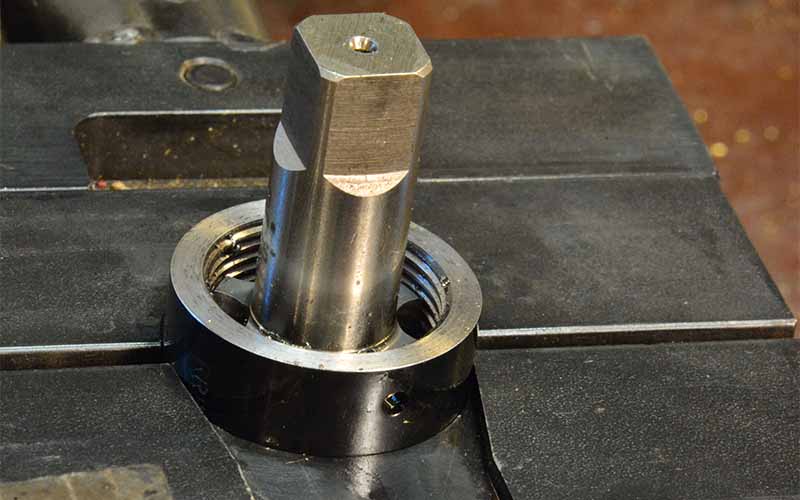
I enjoy building guns and it’s a hobby thing for me. So, if it takes me a bit longer to complete a project because I have to blueprint the action, I see that as more time with concrete under my feet and contentment in my heart. Most of my builds are for my own use or are for friends and family, so we try to keep the cost reasonable. That means, more often than not, a Remington 700 action.
Results? I have a precision rifle in 6mm Creedmoor rifle I built on a Remington 700 short action that I would put up against any similar rifle on any action. I have lots of five-shot groups that are 0.2-inch or a bit smaller. I think the limiting factor is my shooting ability, not the rifle.

On the other end of the spectrum, I built myself a 9.3×62 for hunting. It is capable of 0.5 MOA with factory loads and it runs as fast and smooth as any rifle I own. I’ve used it on elk and whitetail deer with great results. I would not hesitate to use it on dangerous game.
The Remington Model 700 rifle design is almost 6 decades old and it’s still an industry leader. In that time, Remington has changed almost nothing in the basic design. That says a lot about the enduring legacy of the world’s most popular bolt-action, sporting rifle.
Editor's Note: This article is an excerpt from Gun Digest 2021, 75th Edition available now at GunDigestStore.com.
More Long-Range Shooting Info:
- Top 17 Affordable Precision Rifles — Bolt-Action Edition
- 9 Long-Range Shooting Fundamentals You Must Master
- Factors In Selecting A Long-Range Cartridge
- .50-Caliber: The Art Of Extreme Long-Range Shooting
- Secrets To Mounting A Precision Scope On A Long-Range Rifle

Next Step: Get your FREE Printable Target Pack
Enhance your shooting precision with our 62 MOA Targets, perfect for rifles and handguns. Crafted in collaboration with Storm Tactical for accuracy and versatility.
Subscribe to the Gun Digest email newsletter and get your downloadable target pack sent straight to your inbox. Stay updated with the latest firearms info in the industry.

![Best Concealed Carry Guns In 2025 [Field Tested] Wilson Combat EDC X9S 1](https://gundigest.com/wp-content/uploads/Wilson-Combat-EDC-X9S-1-324x160.jpg)


![Best 9mm Carbine: Affordable PCCs [Tested] Ruger Carbine Shooting](https://gundigest.com/wp-content/uploads/Ruger-Carbine-Shooting-100x70.jpg)
![Best AR-15: Top Options Available Today [Field Tested] Harrington and Richardson PSA XM177E2 feature](https://gundigest.com/wp-content/uploads/Harrington-and-Richardson-PSA-XM177E2-feature-100x70.jpg)

The Remington model 725, which was produced between 1958 and 1961, was an upgraded version of the Remington 721/722 and was a far superior rifle to the Remington 700, and was the true predecessor to the Remington 700. Unfortunately, it was too expensive to produce and the Remington 700 was born.
Had a stamped sheet metal extractor that would snap off when a cartridge was stuck in the chamber and it was riveted in place which required a special tool to replace the extractor. Late in production this was changed.
Had a bolt handle that was just barely brazed on and if you dropped the gun or hit the bolt hard enough to seat a stuck cartridge the bolt handle which just fall right off.
The barrel was had the worst type of rifling which was “hammer fudged” these barrels are known to throw shots more than other types of rifling.
The original guns were noted for sticky bolt travel until later in time when they slotted the right bolt lug.
Had a recoil log that was not fixed to the action making rebarreling more difficult.
Generally had inferior bluing compared to other rifles in its price range.
Originally had reverse (negative) machine stamped checkering of the stock that was absolutely hideous and did not prevent your hands from slipping when carrying or shooting the rifle.
Had originally only a two position safety so you could not safely load or unload the gun or remove the bolt from the gun because the safety had to be in the “off” position when you manipulated the bolt when loading or unloading the gun could fire.
Had a push feed action which are known to cause terrible and unsafe jams when the bolt is short stroked causing two rounds to be fed into the chamber at once. It will also get you killed when hunting dangerous big game or in the case of Vietnam killed with a jammed up rifle in your hands.
Generally had inferior workmanship compared to other rifles like the pre-64 Winchester and the various models of 98 Mauser rifles from Belgium, Germany, Yugoslavia, and Czechoslovakia.
The gas escape system was not the best when a cartridge blew up in the chamber.
Had a cheap cheezy stamped sheet metal extractor that would snap off when a cartridge was stuck in the chamber and it was riveted in place which required a special tool to replace the extractor. Late in production this was changed.
Had a bolt handle that was just barely brazed on and if you dropped the gun or hit the bolt hard enough to seat a stuck cartridge the bolt handle which just fall right off.
The barrel was had the worst type of rifling which was “hammer fudged” these barrels are known to throw shots more than other types of rifling.
Actually the Remington 700 was one of the worst rifles of all time and here are just some of the reasons.
Had an unsafe trigger that would fire when the bolt was slammed shut if the trigger was set to light. The trigger which was enclosed in a stamped sheet metal box proved unreliable in the combat conditions of Vietnam as it trapped dust and dirt and was known to freeze up with frozen moisture when used in cold climates like Alaska.
In Vietnam the gun was a total failure in the reliability department because of its defectively designed trigger and its brazed on bolt handle.
Continued below.
I guess Dacian is not a fan…